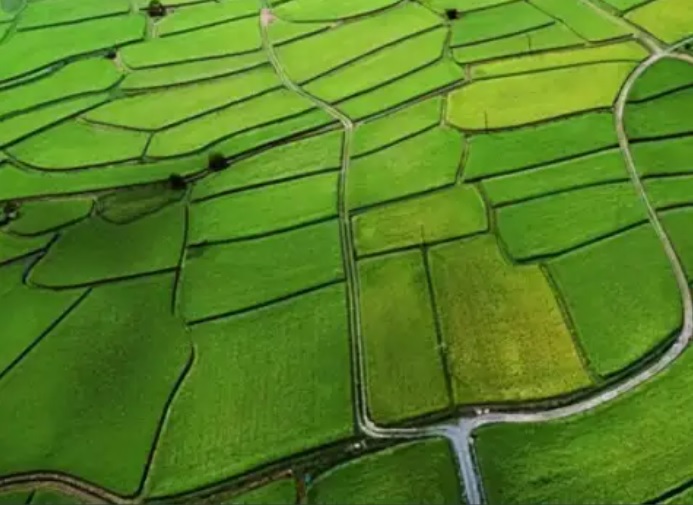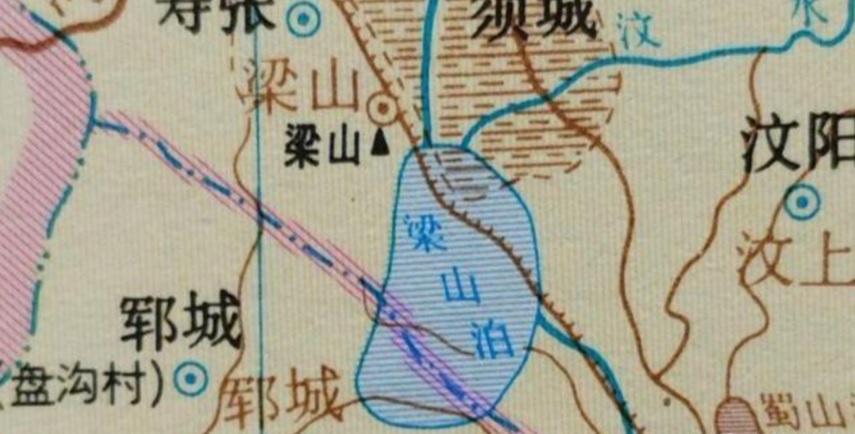The “Measures for the Management of the Permanent Basic Farmland Protection Red Line” have been announced and will come into effect on October 1st. What information is worth noting?
According to the Ministry of Natural Resources, the “Measures for the Management of the Permanent Basic Farmland Protection Red Line” have been announced and will take effect on October 1, 2025. It mentions that after permanent basic farmland is designated, no unit or individual may adjust, occupy, or change its use without authorization. It is prohibited to adjust the permanent basic farmland protection red line without authorization during the adjustment process of ecological protection red lines and urban development boundaries. Permanent basic farmland within urban development boundaries should, in principle, be retained. For fragmented and inconvenient plots that genuinely require consolidation for contiguous farming, priority should be given to replenishing and designating within the urban development boundary, ensuring the total area does not decrease; if it is truly necessary to move them outside the urban development boundary, it must be ensured that the scale of the urban development boundary does not expand.
Viewpoint 1:
The focus is on the word “permanent”. Land issues have always been important, from early land reform and reclamation to the balance between economic development and farmland protection after reform and opening up, and the issues of changing land use on urban fringes and farmland compensation during rapid urbanization post-2000. The 1.8 billion mu (120 million hectare) cultivated land red line was proposed around this time.
The true appearance of the word “permanent” was officially proposed in 2008 for designating permanent basic farmland. It’s no coincidence; 2008 was a critical node in China’s economic development, after which a development model emerged based on land-backed currency printing and local land finance. It’s important to know the enormous efficiency gap between agricultural and industrial production, and the vast price difference between agricultural and commercial land. This led to rapid urban expansion into surrounding areas, with the solution being compensation—compensating for farmland in other areas. Another official policy on permanent basic farmland was in 2016, also not coincidentally, following a second wave of local land finance, demanding expansion from pilots to the entire country and implementing the task of designating 1.546 billion mu. This year’s “Measures for the Management of the Permanent Basic Farmland Red Line” did not suddenly appear; it was indicated before the rapid urbanization in 2008, formally notified in 2016, and is now being refined and more strictly enforced.
Especially regarding urban development boundaries, the requirements are very strict. After permanent basic farmland is designated, no unit or individual may adjust, occupy, or change its use without authorization. For areas truly unsuitable for farming, such as fragmented or polluted areas needing consolidation, priority is also given to replenishing and designating within the urban development boundary, with the total area not allowed to decrease. You’ll find this is meant to restrict the erosion of basic agricultural land by high-value urban land. The cultivated land red line is something no economy would relax, considering food supply security in special periods. This often-discussed point isn’t the focus here.
We can ponder why now?
1) Urbanization is nearing its end; future urbanization will be primarily passive. As discussed before, rural hollowing-out continues, with hundreds of millions left, mostly middle-aged and elderly. With the aging population structure and declining base, and the significantly lower life expectancy in rural areas compared to cities, China’s urbanization rate will experience long-term passive growth, not by actively forcing people into cities through land acquisition. Previous urbanization potential was correct, but the process was deliberately misinterpreted by real estate companies; the rural population can no longer bear the burden of the real estate market. The result is future city capacity, with a declining total population and rural hollowing-out, has little potential left. Planning more urban fringe land itself has no buyers, leads to low occupancy rates, and harms the cultivated land red line.
2) Paving the way for future large-scale farming. Willing or not, large-scale contracting is an unstoppable trend. The biggest current obstacles are social stability requirements and fiscal difficulties. To increase the efficiency of large-scale production, land compensation and welfare safety nets for the rural population are necessary, along with providing massive non-agricultural employment, which is fundamentally unachievable and can only be hoped to be corrected over time.
Preparations are twofold:
One is the rules for land transfer transactions, mainly concerning contracting rights. Since our land is never privately owned, the government lacks funds to acquire it, but the market can practice leasing. This is already a trend and being piloted in rural areas where I’m from: people negotiate to lease a piece of land at a certain price for unified cultivation by others. The income is higher than growing basic crops themselves, but still far less than working away from home, so locals spontaneously resist its promotion.
The other preparation is land nature. It’s important to know agricultural production simply cannot compete in output efficiency per unit area with other sectors. To ensure that even if uniformly leased to others (now for one to three years, possibly for decades in the future), it cannot be used for other purposes, only for farming, guaranteeing self-sufficiency rates for basic material production.
In summary, the “Measures for the Management of the Permanent Basic Farmland Protection Red Line” focus on the word “permanent”, but it’s not new this year; the timeline was set long ago. Why now is more noteworthy than the already uncontroversial cultivated land red line: urbanization potential is exhausted. Over time, passive urbanization will occur, and urban expansion must be somewhat restricted. Most importantly, how land will be used in the future requires setting a bottom line first—designating the scope of permanent basic farmland. Even if usage rights are transferred in the future, the basic attributes cannot change; it’s extremely rigid, leaving less room for loopholes and arbitrage. This might be what distinguishes these management measures from previous cultivated land red line documents.
Viewpoint 2:
Major upgrade of the cultivated land protection system, ushering in an era of “refined” management for permanent basic farmland. The “Measures for the Management of the Permanent Basic Farmland Protection Red Line” will be officially implemented on October 1, 2025, marking China’s transition from “quantity control” to “quality improvement” in cultivated land protection. The biggest highlight of these new regulations is the first establishment of a dynamic adjustment mechanism of “prioritizing superior entries and eliminating inferior exits” while adhering to the unwavering protection red line of 1.546 billion mu. While safeguarding the bottom line of cultivated land protection, the state finally gives localities some flexibility to solve practical production problems caused by previously “fragmented and low-quality” cultivated land. For those paying attention to agricultural policy and land markets, these new rules will not only affect farmland itself but also change agricultural industry layout and land value assessment systems.
I. The “Prioritizing Superior Entries and Eliminating Inferior Exits” Mechanism: How does dynamic adjustment operate?
This mechanism is the core innovation of the “Measures”, solving the unreasonable layout problems caused by the previous “entry only, no exit” policy for permanent basic farmland. Specifically, “eliminating inferior exits” targets seven types of problematic plots: including plots unsuitable for cultivation after relocation, fragmented plots, plots located on slopes above 15 degrees, within nationally approved areas for returning farmland to forests and grasslands, in ecologically fragile areas, in groundwater over-exploitation zones, within river and lake management ranges, and cultivated land listed as strictly controlled category that cannot be restored, disaster-destroyed and mining-damaged land that cannot be repaired, etc.—land difficult to use stably long-term. “Prioritizing superior entries” preferentially selects six types of high-quality cultivated land: newly added cultivated land from comprehensive land consolidation, already constructed high-standard farmland, cultivated land that is contiguous with already designated permanent basic farmland and has quality higher than the local average with slopes less than 15 degrees, cultivated land with good water resources and soil conservation conditions, cultivated land restored from garden plots and other agricultural land, and other circumstances stipulated by law.
This adjustment follows the principle of “no decrease in quantity, no drop in quality, optimized layout, improved ecology”, in principle coordinated at the county level; cross-county adjustments truly needed are coordinated by provincial departments.
II. Reserve Zone System: Reserving Space for Major Construction Projects
The “Measures” for the first time clearly define the permanent basic farmland reserve zone system at the departmental regulation level. The reserve zone has two main functions: firstly, as a source for replenishing and designating when major construction projects occupy permanent basic farmland; secondly, providing backup resources for the optimized adjustment of the permanent basic farmland protection red line. Cultivated land within the reserve zone is still managed as general cultivated land before being designated as permanent basic farmland. Provincial natural resources authorities, together with agricultural and rural authorities, regularly assess and dynamically adjust the reserve zone. While strictly protecting, the state also opens a compliant channel for necessary land needs like infrastructure construction and major industrial development, helping alleviate the contradiction between economic development and cultivated land protection.
III. Clarifying Prohibited Acts: Making the Red Line a True “High-Voltage Line”
The “Measures” further clarify various strictly prohibited behaviors, including:
· Digging lakes for landscaping, constructing green belts.
· Planting turf and other plants for green decoration.
· Stockpiling solid waste, landfilling garbage.
· Other behaviors prohibited by laws and regulations.
These prohibitions make the permanent basic farmland protection red line a true “high-voltage line”, completely curbing past chaotic phenomena where some localities existed “under the guise of ecological construction, agricultural facilities, etc., actually damaging cultivated land”.
IV. Optimizing Adjustment Scenarios and Procedures: Giving Localities Flexible Space
The “Measures” provide detailed regulations on the circumstances and procedures allowing optimization and adjustment of the permanent basic farmland layout, mainly including:
- High-standard farmland construction: If a project truly requires adjusting the layout of a small amount of permanent basic farmland, the county government organizes the preparation of an adjustment and replenishment plan. After completion acceptance, it is reported to the provincial natural resources department for filing, and the national database is updated.
- Comprehensive land consolidation: If a project implementation truly requires optimization and adjustment, a plan must be drafted at the project approval stage by the county department and reported to the provincial level for review and approval. After project acceptance, the database is updated.
- Rural collective economic organization supporting facility construction: Such as irrigation facilities, rural roads, farmland shelterbelts, etc. If adjustment is truly needed, the rural collective economic organization fulfills resolution procedures, then applies to the township and county level according to procedure, finally reviewed by the provincial level and reported to the ministry to update the database.
- Annual assessment and adjustment: County governments, combined with annual check-ups of the territorial spatial plan, can apply to transfer out fragmented, low-quality plots within their jurisdiction and supplement with high-quality cultivated land.
The latter two scenarios (rural collective economic organization facility construction and annual assessment adjustment) have an important precondition: the area of cultivated land in the permanent basic farmland reserve zone within the jurisdiction must exceed 1% of the permanent basic farmland protection task assigned by the higher level. This reflects the prudent principle of “prepare first, adjust later”.
All these adjustments ultimately need to be reported to the State Council’s natural resources authorities to update the national permanent basic farmland database, ensuring unified nationwide control and data accuracy.
V. Impact and Outlook: Agricultural Modernization and Land Value Reshaping
The implementation of the “Measures” will have profound impacts:
On one hand, concentrated, contiguous high-quality farmland is more conducive to large-scale mechanization and the promotion of modern agricultural technology, is expected to reduce production costs by 10-15%, enhancing agricultural competitiveness; on the other hand, the land value system will be restructured—cultivated land located within permanent basic farmland protection areas can obtain higher ecological compensation and financial subsidies, while surrounding general agricultural land may also gain value appreciation expectations due to the reserve zone system.
For capital markets, the agricultural sector and land consolidation-related enterprises will usher in a new round of development opportunities, especially leading companies in high-standard farmland construction, soil remediation, etc., are expected to benefit directly.
In the long run, this system provides an operational path for realizing the “storing grain in the land” strategy and is a specific practice of Chinese-style modernization in the agricultural and rural field.
Viewpoint 3:
If you just glance at the title of this newly released “Measures for the Management of the Permanent Basic Farmland Protection Red Line”, you might think it’s just another standard policy document, far removed from ordinary people.
But if you really go through it, combined with the chaotic phenomena we’ve seen in recent years like “farmland converted to golf courses”, “cultivated land turned into lawns”, “occupying farmland to build houses”, you’ll immediately realize that this “Measures” actually targets everyone—whether you’re involved in planning, projects, farming, or living in cities, this red line is unavoidable.
Put simply, our country’s previous basic farmland protection was a bit like “drawing a line and it’s done”. But this time, the word “red line” is truly implemented as a system.
It’s not just drawing a line called a red line; it’s about arranging every step—drawing the line, land use, supervision, correction, replenishment—dead set.
Once a plot of land is determined to be “permanent basic farmland”, its “identity” is locked.
You can’t move a shovel of soil because of a temporary project, nor can you draw it into a development zone for urban expansion.
Even more, you can’t just use a false pretext for greening or landscaping. Frankly, this kind of “farmland disguise” destruction was done too much in the past; now the state directly prohibits it.
If you really do these things in the future, it counts as illegal, and it’s hard to whitewash.
Then there’s land use.
The “Measures” thoroughly clean up the “gray areas” between permanent basic farmland, urban boundaries, and ecological red lines. You might have thought before that occupying some farmland within the urban development boundary was fine, after all it’s “necessary for development”. Now it’s not allowed. Even if you’re within the boundary, as long as it’s basic farmland, it must be retained.
You say the land is fragmented, hard to farm?
Okay, you can replenish and designate, but the area must be equivalent, the quality cannot be worse, and the process must be compliant.
If you force it, you’re touching the red line.
Then there’s the reserve zone.
This concept is actually unfamiliar to many, but this time it’s precisely to prevent using “reasonable excuses to use cultivated land” whenever something happens in the future.
Every locality must pre-designate “reserve cultivated land”. These reserves are used to compensate for basic farmland occupied due to force majeure factors like natural disasters, project construction, etc. Prepare in advance, don’t fight an unprepared battle.
This plugs the loss of cultivated land at the source.
More detailedly, the “Measures” also clarify which land is prioritized for the reserve zone, such as land newly added after consolidation, constructed high-standard farmland, contiguous good farmland, land with good water sources, land returned to cultivation from forest or garden land…
In other words, it’s about using the most plantable, most stable, most grain-producing land as a safety net, not using again “junk land” or “transitional land” to make up numbers and fool people.
And the IT-based supervision part is even stricter.
The “Measures” clearly propose that all national permanent basic farmland data must be connected to the “One Map” system for territorial spatial planning.
The location, coordinates, use, changes, adjustment time, responsible person of this plot of land on the map are all recorded.
Who moved the land, why, whether it was compensated, which plot was used for compensation, who approved it—all are traceable.
This puts technological shackles on the system. Anyone wanting to do something crooked will find their entire operational path in the system, not afraid of you playing tricks.
The replenishment mechanism is also arranged in great detail.
For example, if adjusting the basic farmland layout is truly needed during high-standard farmland construction, you must build first, accept first, then do the replenishment, not the other way around of occupying the land first.
Even if rural collective economic organizations build supporting facilities, like drainage ditches, field roads, forest belts, etc., as long as it involves adjusting permanent basic farmland, they must complete the entire set of procedures: collective resolution, reporting level by level, on-site verification, passing acceptance, database update. Not a single step can be omitted.
Interestingly, the “Measures” also leave a door: if certain major construction projects truly must use basic farmland, like national strategic platforms, major ecological construction, relocation and resettlement, etc., they can apply for optimized adjustment, but this must be approved by the State Council.
In other words, special circumstances are allowed, but the threshold is extremely high, the procedure extremely strict, absolutely no leniency.
Aiming at the past practice of many localities creating “digital farmland” or “paper farmland” to cope with inspections, the “Measures” also directly block these loopholes.
Whether a plot is truly planted, what its soil fertility is like, whether it has degraded—all must be monitored, assessed, and published.
Data has the say, not smooth talk.
Even details like the soil organic matter content, slope, irrigation conditions of the farmland become criteria for determination; unqualified land cannot be designated.
There’s also a very practical regulation many might easily overlook.
That is the correction mechanism for “technical errors”.
In the past, some places had basic farmland on the map, but upon inspection, it was wasteland, sandy land, or even already built over with houses.
Now you can’t just “transfer it out” with a snap decision; it must go through county certification, provincial review, and State Council database update.
And the replenishment task must still be completed, no exceptions.
Delving deeper, the “Measures” are actually laying the foundation for the future digitalization, refinement, and intensification of the entire agriculture sector.
Now we’re not just guarding “how many mu”, but precisely mastering “how much grain can each mu produce”, “how many more years can this mu be planted”, “should it be crop rotation or fallow”.
Once this mechanism is built, every piece of good farmland nationwide becomes a controllable asset unit, not a bunch of vague plots.
The national level has long seen clearly that the current food security problem is no longer simply “is there land”, but “is there land that can truly produce grain”.
No matter how fast you urbanize, you can’t smash the rice bowl.
Even if you want to develop “urban agriculture” or “smart agriculture” in the future, you need land to plant, land that can be planted, land that dare be planted.
I know some will complain, with such strictness, can local governments still work? Can they still attract investment? Can they still build infrastructure?
My understanding is, yes, but you have to change your mindset.
It’s not that development is forbidden, but you are not allowed to touch that foundation.
You can upgrade in place, work on stock, but cannot “dismantle the ancestors’ stove to build buildings”.
This doesn’t conflict with spending money, but the rice bowl, rations must be protected first.
I instead think this is actually a forcing transformation opportunity for localities.
The past race for speed and land encircling is unsustainable.
Now the race is about governance capability, coordination ability, planning proficiency.
Achieving results with limited resources is true skill.
This “Measures” is not written flashily or emotionally, but solidly and realistically.
I can feel behind it the central government’s strong sense of urgency regarding food security, the determination to systematize the management of the cultivated land red line, and the insistence on the policy logic that “development must be based on a bottom line”.
Ultimately, this isn’t just about a document, but another upgrade of the national strategic logic.
In this era full of uncertainty, stabilizing the most basic things and guarding the most fundamental elements is the greatest certainty for coping with all future risks.
Viewpoint 4:
Many interpretations below have got the direction wrong. Seeing the word ‘red line’, they panic. Look carefully at the content and compare it with old documents. It’s actually a relaxation. Actually, after the approval power was delegated to Hainan, people in the planning industry guessed whether it would be delegated nationwide. This is actually good news for several major grain-producing provinces or land-scarce provinces. Finally. Stop being afraid of having no food to eat every day. The issue to solve now is not cultivated land; if desired, investing money can add it. The biggest problem now is to solve the issue of abandonment of cultivated land, especially non-contiguous farmland. Without a significant price increase for staple grains, land becomes shackles welded shut on farmers.
Viewpoint 5:
As a rural person, I do not approve of this policy. It’s equivalent to a one-size-fits-all approach. For example, rural areas now don’t allow house repairs because of basic farmland. Urban development heavily promotes real estate, but if rural areas don’t develop and people have no place to settle, how can they return home to develop? While shouting for rural revitalization, while implementing various restrictions preventing people from returning, it’s too hypocritical.
Viewpoint 6:
Completely incomprehensible. Is the goal to engage in agricultural exports in the future? It may seem like with 1.4 billion people now, cultivated land is completely insufficient. Actually, following this trend, it’s uncertain whether there will be 800 million people in 40 years. 600 million fewer people mean 600 million fewer stomachs; how much food demand will decrease? How much will the demand for cultivated land decrease? Not to mention, with fewer people, the demand for construction land will also decrease. Just the homesteads flattened in future rural areas could release hundreds of millions of mu of land. Current infrastructure and national policies are made for an expectation of 2 billion people. The result is money is spent, things are built, but people are gone. In the future, this infrastructure, including farmland, roads, high-speed rail, airports, high-rise residences, office buildings, commercial districts, will all be largely abandoned, not only unprofitable but also requiring fiscal subsidies for maintenance and upkeep, lol.
Viewpoint 7:
I don’t know which version the land use attributes are updated to now anyway. But a couple of years ago, a bunch of mountainous land was said to be basic farmland. At that time, working on a township road widening project, one town checked and said the roadside was basic farmland, halt. Another town checked, also basic farmland; the roadside was mountainous land, also labeled as basic farmland. Then they said using over 3 mu of basic farmland could get you arrested. Now that data updates are so convenient, hurry up and update. Field is field, mountain is mountain, forest is forest. Don’t label them randomly.
Viewpoint 10:
Regarding this issue, I’ve answered it before! Those people high up never go to the grassroots to see, never go to rural areas to see. Go and truly understand. What is the current situation of basic farmland! Everyone is in the office, looking at reports submitted upwards to make policies and plans, without thinking whether these numbers are accurate or correct. Many people brag every day, saying satellites can photograph, etc. Really deceiving themselves. Basic farmland protection: policy is policy, execution is execution. For example, if you invest 1 billion, how much farmland couldn’t you get? They have plenty of ways. If you have connections, they dare to reroute railway line designs, let alone a mere piece of land! Go see how many projects now occupy basic farmland?





I simply desired to thank you very much once again. I do not know the things I could possibly have accomplished without the information revealed by you regarding that field. It was a very fearsome scenario in my circumstances, however , coming across a skilled manner you managed it forced me to leap over happiness. Extremely happier for your advice and thus hope that you comprehend what an amazing job that you’re putting in educating the rest via your webblog. More than likely you’ve never met any of us.
Hi there, just became alert to your blog through Google, and found that it’s truly informative. I am going to watch out for brussels. I will appreciate if you continue this in future. Numerous people will be benefited from your writing. Cheers!
Superkingph… Interesting name! Time to see if it lives up to the hype. Got my fingers crossed for some good entertainment. I’ll give it a try later! Stay tuned, might be big! Have you been seeing this anywhere else?. superkingph